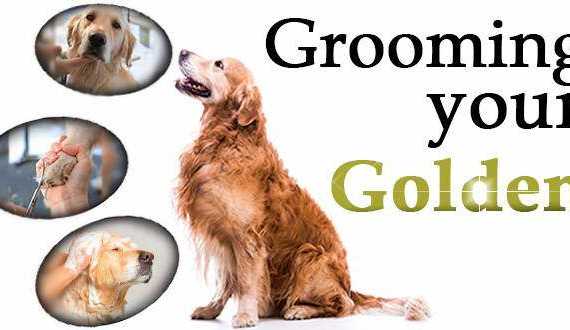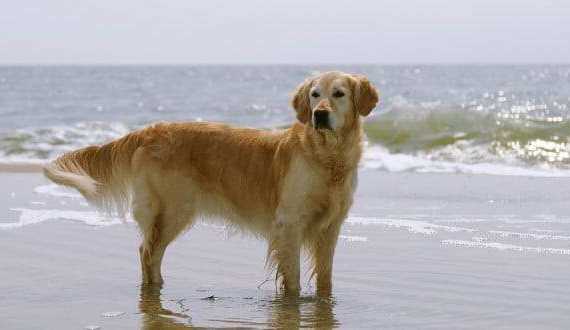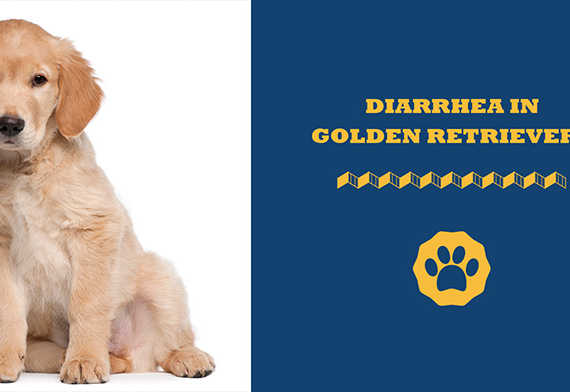Updated: November 11th, 2022
This article contains affiliate links. Read the full disclosure here.
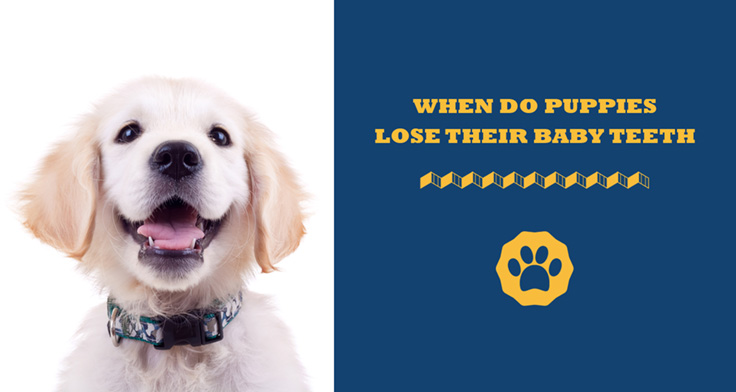
Puppies lose their baby teeth between three and six months of age. They will have a full set of adult or permanent teeth in their mouths by the time they are eight months old.
Puppies need a lot of love and care during the teething process because it can be uncomfortable and even painful for them to experience. Fortunately, keeping them active and stimulated will help distract them from the pain of the process.
Distracting them from your furniture is also an important thing to do while they are teething! This is where lots of chew toys come into play! By providing your puppy with a variety of chew toys, you will provide them with the best option to chew on that is not your furniture or clothing!
Read on to have a look at what the puppy teething timeline looks like and what you can do to make things easier and more comfortable for them while they lose their puppy teeth and gradually develop their permanent adult teeth.
Teething Products At A Glance
Searching for the perfect product to help your puppy through a difficult and painful process like teething is stressful. I have put together a list of some products that I recommend every teething puppy has to ease this process.
| IMAGE | PRODUCT | ||
|---|---|---|---|
|
Top rated toy / Best budget toy
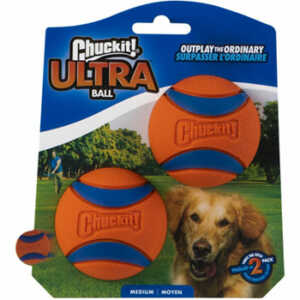 |
Top rated toy / Best budget toy
|
|
CHECK PRICE → |
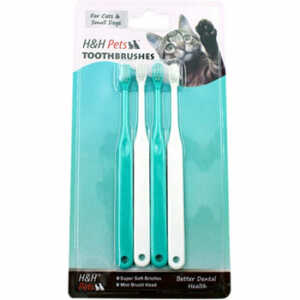 |
|
|
CHECK PRICE → |
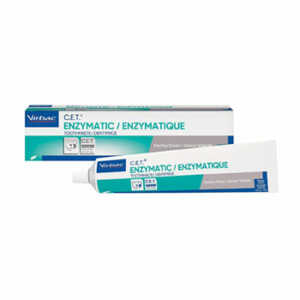 |
|
|
CHECK PRICE → |
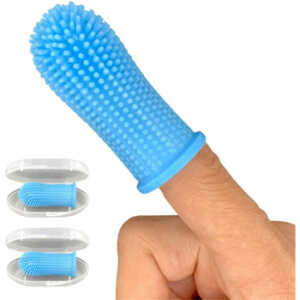 |
|
|
CHECK PRICE → |
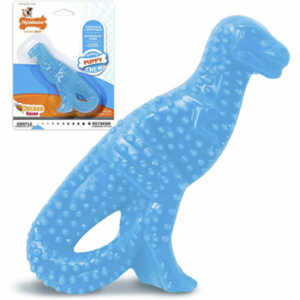 |
|
|
CHECK PRICE → |
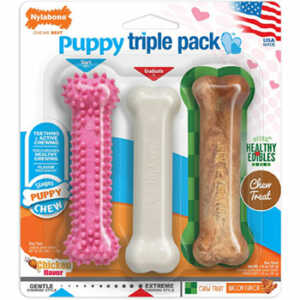 |
|
|
CHECK PRICE → |
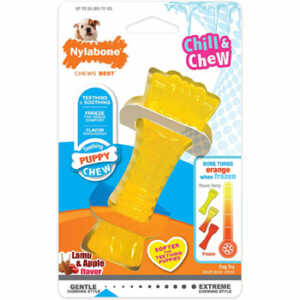 |
|
|
CHECK PRICE → |
What Kinds Of Teeth Do Dogs Have?
Dogs have very different types of teeth and a different dental structure to humans. Our teeth are designed to bite things off and to chew and grind softer, more fibrous food down. Dogs, on the other hand, have teeth designed to shear through meat and cut it up into small pieces and hunt!
What Are Your Dog’s Teeth Designed To Do?
Different kinds of teeth are designed to do different things in the mouth.
- Incisors chop through food and cause damage to prey when hunting.
- Canines are longer and more pointed to help shear through very tough food and inflict bites when hunting. They are also known as fangs.
- Premolars start the grinding process by chopping the food into smaller pieces. They are also known as the carnassial teeth, and the upper and lower jaws work together to act like scissors.
- Molars grind the food down into smaller pieces to make digestion easier.
As adults, dogs will have 42 teeth on average. Every dog is different, and they may have one or two teeth missing because of an accident, gradual wear and tear, or even a genetic defect.
Adult dogs will have 6 incisors, 2 canines, 8 premolars, and 4 molars on their upper jaw and 6 incisors, 2 canines, 8 premolars, and 6 molars on their lower jaw.
When Do Puppies Get Their Teeth?
Puppies’ baby teeth start coming in between one and two months of age. Their baby teeth are not very strong and can break if they chew on inappropriate materials. During this time, they are still drinking their mother’s milk and do not really need their teeth.
As their baby teeth come in, they will be small but very sharp! This can be a bit of a painful and uncomfortable process for them, which is where teething comes in.
When Do Puppies Start Teething?
Between three and four months, the real teething process starts. Your dog’s baby teeth will start falling out, and their adult teeth will slowly start coming in. During this time, you may find their baby teeth where they sleep, in their food bowls, or even stuck in their toys.
Their baby teeth look like little grains of white rice. During this time, you need to start socializing your puppy to accept your fingers in their mouths without them biting down. This will make brushing their teeth regularly as an adult much easier!
Again, teething is an uncomfortable process, and they will want to chew to help ease the process. This is why teething toys are so important! I will talk more about the toys I prefer a little further down the article.
Between six and eight months, your puppy should finish teething! Their baby teeth will have all fallen out, and their adult teeth should all be present. Once you notice that all of their adult teeth have come in, usually around the nine month mark, take them to the vet for a dental visit.
This is an important visit! The vet will check that all of the baby teeth really have come out and that none of the adult teeth are stuck in the jaw or have become impacted.
Here is a timeline of the dental changes your puppy will experience as they grow up.
Age | Teething Milestone |
1 to 2 months |
|
3 to 4 months |
|
6 to 8 months |
|
9 months |
|
The Best Teething Toys
Teething toys are an important part of the teething process for puppies.
Puppies feel the need to chew anything they can get their teeth into to help ease teething pain and discomfort. If they do not have toys to chew on, then they will start chewing on anything around them, like your shoes and furniture!
Below, I’ll go into a bit more detail about the best teething toys for puppies (listed earlier in this article in a table).
Nylabone Puppy Chew Toys For Teething Puppies (Triple Pack)
Nylabone Puppy Chew Toys for Teething Puppies is a triple pack of chew toys that takes your puppy through their teething process. The beginner toy is soft and is covered with small nubs for three-month-old puppies.
The second toy is harder and smoother for when your puppy’s adult teeth start coming in. The two bones have a chicken flavor throughout, which will encourage your puppy to chew on it and not on your furniture.
The third chew is a treat chew to congratulate your puppy on their process!
Nylabone Puppy Chew Toys For Teething Puppies (Dinosaur)
Nylabone Puppy Chew Toys for Teething Puppies is a dinosaur chew toy that is covered in small nubs to help stimulate your dog’s gums as well as gently clean their teeth while they chew away.
The toy is flavored throughout to encourage your puppy to chew on it and to not chew on your furniture or something that could hurt their mouths.
Chuckit! Ultra Rubber Ball Tough Dog Toy
Chuckit! Ultra Rubber Ball Tough Dog Toy is a medium-to-soft chew toy that makes teething fun for puppies. The balls are solid enough to withstand the teething process while also being soft enough to not damage anything when being thrown around.
Nylabone Chill And Chew Dog Chew Toy For Teething Puppies
Nylabone Chill and Chew Dog Chew Toy for Teething Puppies is an excellent choice if your puppy is experiencing pain during their teething process. This toy is designed to be put in the freezer until it is frozen. Your puppy now has a frozen treat to enjoy!
Because this toy is meant to be frozen, it poses more of a challenge to your pup to actually get their teeth into which is mentally stimulating for them. The toy is another kind of texture and temperature, which is new to your puppy which makes it exciting! This is also an excellent toy to use as your dog grows up to help them keep cool during the summer time!
Teething Toys To Avoid
It is important to remember that not all teething toys are created equal. In fact, some of them can hurt your dog’s sensitive mouth while they are teething.
Toys that are made of rawhide and hooves, for example, should not be offered to your puppy. Rawhide toys include a lot of glue and chemical additives which will negatively affect your puppy’s tummy. Hooves are far too hard and can splinter in your puppy’s mouth which will cause injuries.
Bones should also be avoided completely because they can splinter as well and get lodged between the teeth and cause pain and infection.
Additionally, any toy that is too small and poses a choking hazard (including human toys) are not suitable for puppies to use as chew toys.
How Can You Support Your Puppy’s Dental Health?
Your puppy’s mouth is a delicate place and needs care just like yours does. They need to have their teeth brushed to remove plaque build-up. If you do not brush their teeth regularly, then they will need to go to the vet to get the build-up surgically removed, which can be quite costly and time-consuming as well as stressful for your dog.
There are some supplies you should have at home to help keep your dog’s teeth as clean and healthy as possible, namely finger pads, gauze, and, of course, a pet-safe toothbrush with toothpaste.
Finger Pads And Gauze
When your puppy is going through its teething phase between three and six months, you should be socializing them to get used to having your fingers in their mouth without them becoming aggressive or biting down.
Using the Jasper Dog Toothbrush, 360º Finger Toothbrush Kit or a piece of gauze wrapped around your finger, you can gently brush your puppy’s baby teeth and their new adult teeth. The finger toothbrush or gauze will protect your finger from their needle sharp teeth and clean their gums too!
Toothbrush And Toothpaste
As your dog gets older and their adult teeth grow in, their teeth should be brushed every other week or so to keep them nice and clean. The H&H Pets Cat & Small Dog Toothbrush is an excellent choice, as it is small enough to get into the back of your dog’s mouth even if they are a small breed.
Using pet-safe toothpaste is vital when you are brushing your dog’s teeth. Virbac CET Enzymatic Toothpaste is an excellent toothpaste to use as it fights bad breath, bacteria, and plaque build up.
It is important to only ever use a toothpaste that is safe for dogs. Human toothpaste is not acceptable for dogs.
FAQs About When Puppies Lose Their Baby Teeth
Do Golden retrievers start teething on a different timeline to other dogs? When will they lose their teeth?
Golden retrievers will lose their teeth at the same rate as any other dog. As all dogs are unique, some may lose their teeth a little earlier than others, and some may have their adult teeth come in later.
You may not always know when your Golden is losing its teeth, as most of them will come out while they are eating, and the teeth will get swallowed.
Are there specific dental problems common in Goldens?
Goldens can suffer from intense plaque build-up as they do not always like their teeth being brushed, and this discourages owners from brushing their teeth. It is important to stick to a regular brushing schedule to prevent plaque from developing.
Wagging Away On The Puppy Teething Timeline…
It is important to know when your puppy loses their baby teeth and when their adult teeth are coming in so you can provide the best dental support possible to help them have healthy mouths and reduce time at the vet as they grow up.
To recap, let’s have a look at our puppy teething timeline:
- At 1 to 2 months, the baby teeth have all come in
- At 3 to 4 months, the baby teeth will start falling out
- At 6 to 8 months, the adult teeth have all come in
- 9 months: Visit to the vet
Keep an eye on your puppy while they are teething, and always provide them with plenty of toys to help the process along and to prevent them from destroying your furniture!

